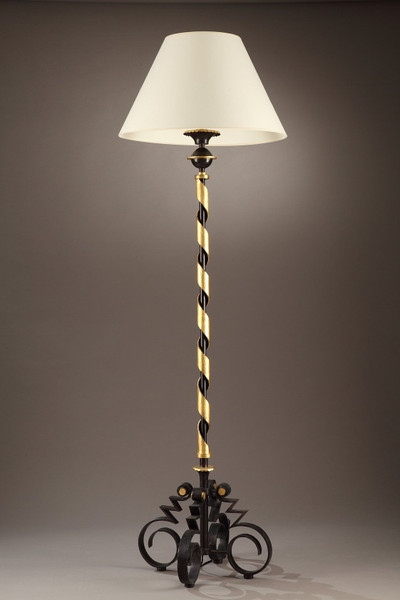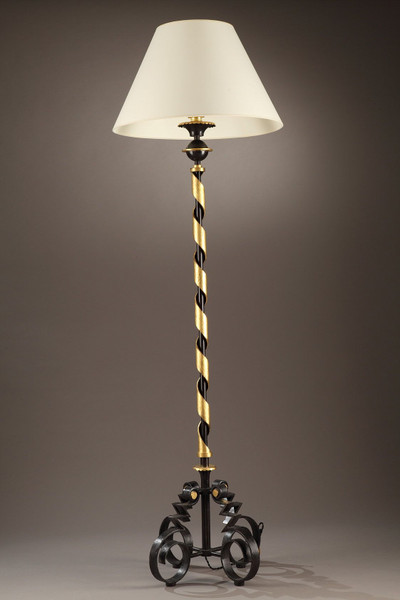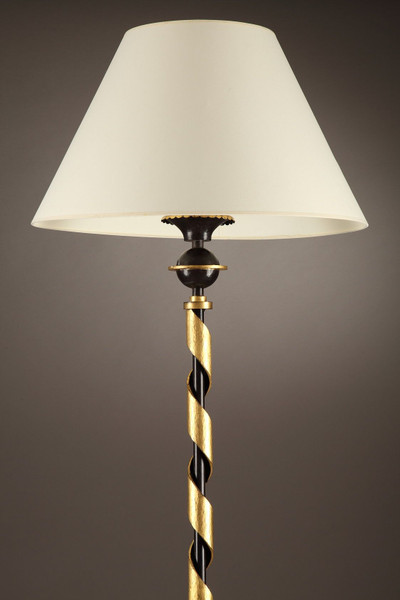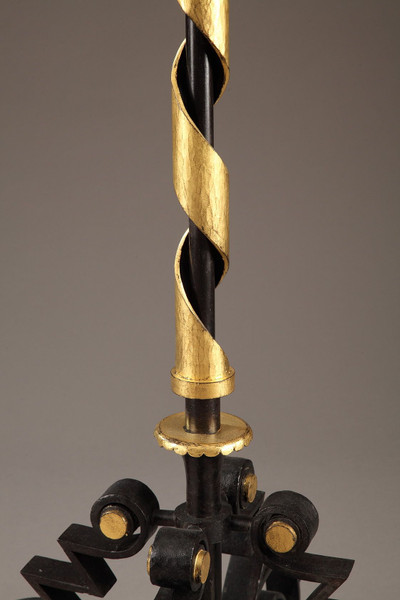A floor lamp by Gilbert Poillerat in patinated and gilded wrought iron, with a cylindrical stem adorned with a twisted scroll, surmounted by a sphere highlighted by a disc. It rests on a four-legged base with scrolls connected to the stem by four cylindrical elements. Minor scratches from use. Gilbert Poillerat (1902-1988) trained at the École Boulle, where he discovered metalwork. It was a revelation. Graduating in 1921, he joined the workshops of Edgar Brandt, a prominent French arms manufacturer and building metalworker, with whom he remained for six years. From 1928 onward, while working for Baudet, Donon et Roussel, a major elevator and metal construction company, he presented his creations under his own name. Deeply classical by nature and respectful of the Old Masters, his taste leaned toward the forms of the Grand Siècle (17th century). The era was characterized by the gradual abandonment of the cult of the right angle in favor of curves and convolutions, which suited him perfectly. From 1935 onwards, he received prestigious commissions, such as the doors of the Palais de Chaillot, the railings of the Bibliothèque Nationale, and the lighting fixtures for the Eiffel Tower restaurant. But the young blacksmith sometimes departed from monumental works to apply his many talents to smaller objects: andirons, floor lamps, small interior grilles, screens, and figurines that referenced the creations of blacksmiths of yesteryear. By the end of the 1930s, Gilbert Poillerat had already established himself as the leading blacksmith of his generation. Bibliography: An identical model, dated circa 1938, is reproduced in François Baudot, "Gilbert Poillerat, maître ferronnier" (Gilbert Poillerat, Master Blacksmith), Éditions Charles Moreau, Paris, 1999 (see photo above). Art Deco period, Circa: 1938 Dim: W:50cm, D:50cm, H:165cm.
- Reference :
- 1700
- Availability :
- Sold
- Width :
- 50 (cm)
- Height :
- 165 (cm)
- Depth :
- 50 (cm)
- Identify Exists:
- False


















